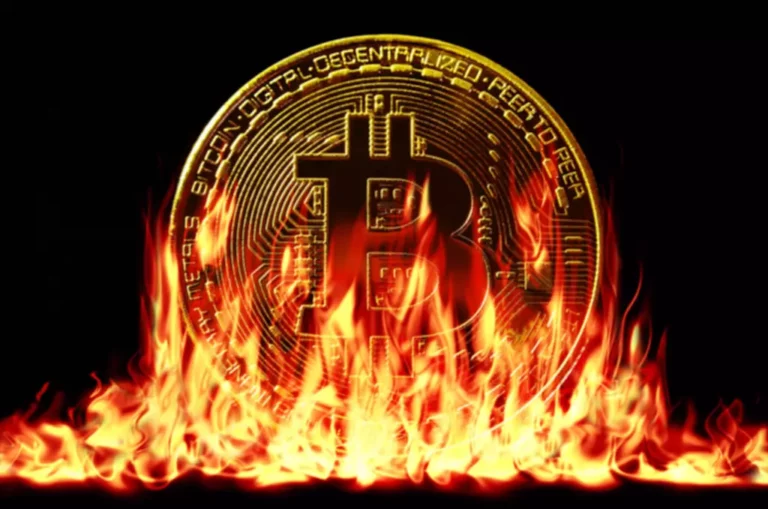What Are Altcoins? Guide to Bitcoin Alternatives
The MTC resource center aims to bridge the gap by featuring easy-to-understand guides that build up and break down the crypto ecosystem for many. Creating tokens is a much easier process as you do not have to modify the codes from a particular protocol or create a blockchain from scratch. An individual can have a token that https://www.xcritical.com/ gives him access to a certain number of loyalty points on a blockchain managing a retail chain. Another token may provide users access to a certain number of hours on a streaming service. Utility tokens provide users with access to a product or a service. These tokens are in limited supply, making them rare and valuable.
A coin is a cryptocurrency that comes with its own dedicated and standalone blockchain. In other words, a coin is a specific blockchain’s native cryptocurrency. There are many types of altcoins to choose from in today’s market, which makes it advantageous. However, the attached risks cannot be ruled out since most have no stable system. It is also necessary to know your pocket size because altcoins will serve as a better investment if you don’t have much liquidity.

Others use different processes to validate blocks of transactions in order to offer quicker transactions. Another term that pops up when discussing cryptocurrencies, is “altcoins”. The term came into being to describe any cryptocurrency that is an alternative to Bitcoin, and includes coins or tokens.
Bitcoin, with its pioneering status, became the “gold standard” of cryptocurrencies, transforming the financial landscape with its groundbreaking blockchain technology. It has secured its place as the cornerstone among blockchain-based cryptocurrencies, given its first-mover advantage. In contrast, the inception of altcoins was motivated by desires to refine and augment Bitcoin’s foundation. With the number of altcoins rising, it’s worth considering more than just Bitcoin when looking into alternative savings, spending or trading options. If it’s a quicker day-to-day payment you’re looking for, Litecoin could be the best coin for you. Alternatively, Ethereum would be better if decentralised apps and smart contracts are what you’re working with.
What Are Altcoins?
Network tokens are necessary to interact with a blockchain or decentralized application. Network tokens often incentivize users to participate in and contribute to the network. For example, Ethereum’s native token, Ether, is needed to fuel transactions on the Ethereum network. The most common type of coin is the circulating coin, which is the coin that is used in everyday transactions.

For example, they might be used to purchase services, pay network fees, or redeem rewards. Filecoin, which is used to buy storage space on a network and secure the information, is an example of a utility token. This was a historic event because it was the first digital asset security to offer equity in a United States-based issuer. Notable stablecoins include Tether’s USDT, MakerDAO’s DAI, and the USD Coin (USDC). Altcoins attempt to improve upon the perceived limitations of whichever cryptocurrency and blockchain they are forked from or competing with.
What Are Tokens?
Put simply, they are both currencies using blockchain technology at their base. Coins refer to any cryptocurrency that has a standalone, independent blockchain. Examples of popular coins include Bitcoin, Ethereum, Litecoin, and Bitcoin Cash (BCH).
- Here, validators, rather than miners, are responsible for transaction verification.
- Secondly, Bitcoin’s market cap is significantly higher than any other cryptocurrency.
- Bitcoins are mined every 10 minutes, whereas an altcoin, such as Litecoin, produces coins every 2.5 minutes, speeding up transactions on this coin over Bitcoin.
- Cryptocurrencies have caught the eye of investors around the world.
Here, validators, rather than miners, are responsible for transaction verification. This method emphasizes coin ownership and reduces the environmental impact, primarily because it doesn’t rely on energy-consuming puzzles. Litecoin, for example, started out as a clone of the Bitcoin blockchain’s source code, but it included changes what are different types of tokens in blockchain to speed up transaction times and improve storage efficiency. It is similar to an Initial Public Offering (IPO) for stocks, with critical distinctions which are explained in this article. Many are crazy over ICOs as they represent a great way of identifying interesting projects that can provide great financial returns.
The value of a coin is derived from its underlying blockchain technology. For example, Bitcoin’s blockchain enables it to be a decentralized currency, while Ethereum’s blockchain allows for developing smart contracts and other applications. The price of a coin is determined by supply and demand on cryptocurrency exchanges. To understand altcoins better, it is essential to note that two words came together to create the terminology. The first is “alt,” which stands for alternative, and then coin, which can also be referred to as tokens or digital assets in the crypto world.
Is Bitcoin an altcoin?
You can even lend, borrow and access countless blockchain apps directly within Ledger Live, meaning you don’t need to forfeit custody of your keys to start exploring. Some utility tokens may act as in-game currencies, whereas others may be awarded as part of a loyalty scheme when using a specific company. Another popular use case for utility tokens is as decentralized voting instruments in DAOs. Since the network needs participants, but processing transactions involves hard work, the security of a network relies on its incentivization structure. Since public blockchains are decentralized, coins are an integral part of this security model, as miners and validators must have an incentive to keep the system running. Tokens are generally created and distributed through an ICO (Initial Coin Offering) campaign.

Here’s a look at the top 10 altcoins by market capitalization, excluding stablecoins. We’ve excluded stablecoins since they are designed to maintain a stable price and are not typically considered to be a speculative investment. There is a wide variety of coins and tokens with use cases that go well beyond a medium of exchange, meaning they aren’t necessarily Bitcoin competitors. Altcoins are crypto coins that are an alternative to Bitcoin, the original cryptocurrency and reigning crypto leader.
What Are Coins, Tokens, and Altcoins?
“Altcoin” is a catch-all term for alternative cryptocurrencies to bitcoin. Currently, there are more than 9,000 cryptocurrencies in existence. Bitcoin is just one of the myriad coins and tokens that comprise the cryptocurrency space. You’ve likely heard some of their names—such as Ethereum, Ripple, and Litecoin.
Furthermore, the meme coin trend highlights a shift in the cryptocurrency landscape, where community engagement and viral marketing have become potent drivers of a coin’s success. Indeed, the crypto market has witnessed a surge in these altcoins, with thousands now in circulation. Ranging from cryptocurrencies like Litecoin (LTC) and Ether (ETH) to countless others, they’ve addressed both the technical and functional challenges posed by Bitcoin. In the realm of cryptocurrency valuations, it’s common to see altcoins priced in Bitcoin, given BTC’s dominant stature.
By adding the two words together, altcoins simply mean a substitute token or another token that is not Bitcoin. Certain altcoins do more than just allow the exchange of money for goods and services. These are usually called utility tokens or security tokens for example. Some altcoins offer better anonymity, while others target specific industries.
While Bitcoin is capped at a maximum supply of 21 million coins, Litecoin is capped at 84 million coins. By December 2021, what had started as a decentralized blockchain had grown into a fully decentralized autonomous organization (DAO). Ripple and two of its executives are involved in an SEC lawsuit alleging they should have registered XRP as a security, and the company says XRP is instead a currency.
Predicting the onset of an altcoin season remains elusive, with no definitive indicators guaranteeing its arrival. However, tools like the Altcoin Season Index by the Blockchain Center have emerged, offering insights into market dynamics by evaluating if Bitcoin or altcoins are currently in the ascendancy. The emergence of nonfungible tokens (NFTs) and the soaring popularity of meme coins, such as Dogecoin and Shiba Inu, further add complexity, often acting as catalysts for new altcoin cycles.

